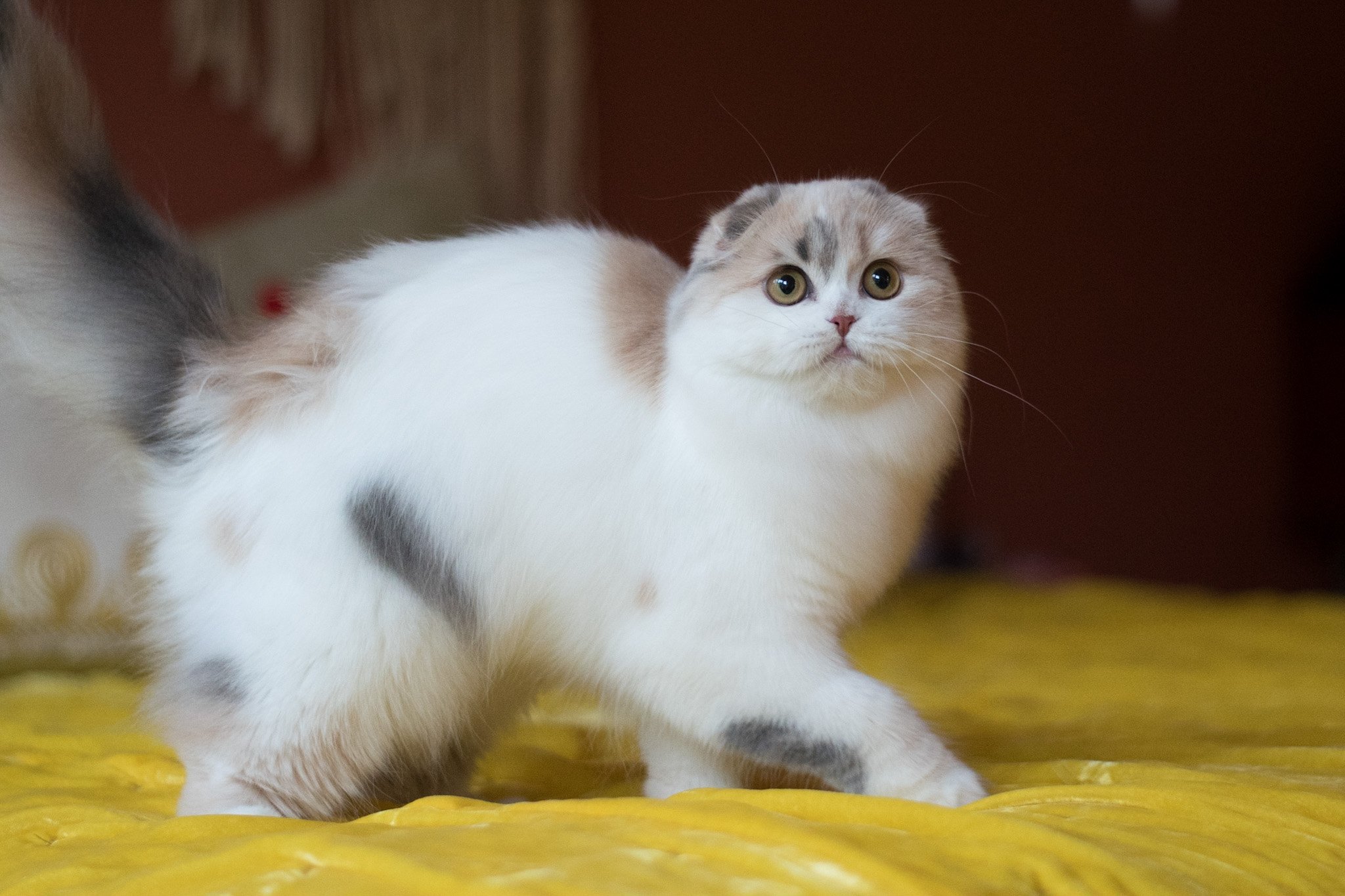
Scottish Folds
Characteristics
The Scottish fold breed can be traced back to a single white barn cat named Susie in 1961 in Scotland. This breed comes in two types: folded ears and straight ears. Careful and selective breeding must be done in order to minimize health risks associated with folded ears, specifically issues relating to their cartilage and joints. Their disposition matches their sweet expression, and they have a calm yet playful temperament. They are highly social cats who love human companionship, and adapt to almost all households (whether it’s a home with noisy children and dogs, or a single person’s apartment). This is not an easy breed to produce without health complications, so please be an educated and responsible consumer when shopping for your new family member.
Breed specific health issues
Example of severe OCD
OCD
Osteochondrodysplasia is a disease specifically associated with the Scottish fold due to the dominant mutation that causes the folded ears. When the gene is evident elsewhere to the body, it can cause crippling effects to the joints, limbs, and tail. It is extremely crucial that a folded ear must be bred to a straight ear to result in only one copy of the mutation. Due to a large amount of irresponsible breeding practices with breeders failing to genetically test their cats (to ensure the number of copies of the gene), the Scottish Fold cat has unfortunately now developed a bad reputation for these health issues. It has caused this breed to become banned in some parts of the world. Unfortunately, it has also been proven that even with just one copy of the gene, cats may still exhibit these crippling effects of OCD. This means that signs of OCD may still arise even with careful breeding practices. The latest, most up-to-date blinded study however, does show hope that this breed can be produced correctly if done very carefully.
Here at Wild Wisteria, all of my cats are genetically tested to ensure they carry only one copy of the fold gene. Many of the folded ear cats in our cattery exhibit in the CFA shows and have been handled by many judges to ensure flexibility of the tail and joints.
HCM
Hypertrophic cardiomyopathy is the most commonly diagnosed cardiac disease in cats, but certain purebreds are at an increased risk, Scottish Folds being one of them. It is characterized by abnormal thickening of the heart’s muscular walls. It is a progressive disease that often leads to heart failure once the scarring of the muscle affects heart function. In many fatal cases, the wall will thicken so severely that it will cause blood to back up into the lungs, resulting in death. To this date, there is no guaranteed way to rule out HCM. The best way to minimize possibility in a breeding program is performing echocardiograms on all breeding cats. However, it is still not the perfect tool for detection and is quite costly, so many breeders opt out of this.
At Wild Wisteria, we perform echocardiograms through a vet cardiologist at 18 months of age, on all of our breeding cats yearly.
PKD
Polycystic Kidney Disease (PKD) is an inherited disorder most frequently found in Persian cats and Persian crosses (Scottish Folds being one of them, although this is not an acceptable outcross), in which the kidneys develop small, liquid-filled sacs called cysts. It leads to kidney failure, and often times cats do not show symptoms until much later in life. It is crucial (and quite inexcusable not to) that all breeders genetically test their cats for this disease, as it is 100% detectable. Oftentimes we will hear breeders that do not genetically test say, “I’ve never had this issue.” Since most cats do not show symptoms until later on in life, it is far too late for the breeder to be held accountable. Do not be afraid to ask for proof of genetic testing, since good breeders will be proud to present it to you.


